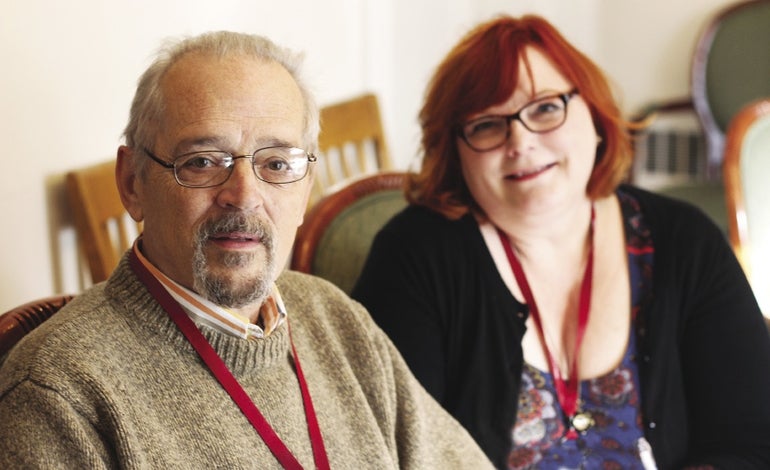Does home care pay enough?
Home health and personal care workers are hot commodities as demand for their services grows with an aging population. In fact, there aren't enough of them to keep pace with the need for home care.
It's somewhat counterintuitive, then, that this segment of the labor market draws some of the lowest wages of any occupations — in many cases, not much above minimum wage. According to the U.S. Bureau of Labor Statistics (BLS), the median hourly wage for a Massachusetts home health worker was $12.66 in May 2013, while that of personal care aides, whose tasks often overlap with those of home health aides but require less training, was $12.36.
Massachusetts' median wages are higher than the national medians for these jobs, which are closer to $11 and $10 per hour, respectively, according to BLS data. But they still amount to an annual salary of only around $25,000 for workers who can find full-time employment in the field.
In some ways, it's logical that home care workers don't earn high wages. Lisa Gurgone, executive director of the Home Care Aide Council, a Massachusetts trade group for the home care industry, said the field has a “low barrier to entry” for employees. Often, they're immigrants with limited English, and usually not well educated, she said. The workforce also lacks stability, with an annual turnover rate of about 50 percent, according to Gurgone.
Increasing importance as ranks of elderly grow
That's a problem, Gurgone said, because the U.S. health care system already relies heavily on these workers to manage the care of elderly patients, and that's becoming more pronounced as the federal Affordable Care Act encourages administering health care in the lowest cost setting possible. For the elderly, that often means at home.
But there's a need for a better-skilled workforce, and Gurgone said that won't come without higher pay.
“We see this workforce as a very important part of the health care spectrum,” Gurgone said, noting that home health and personal care aides are the second- and third-fastest-growing occupations in the U.S.; according to the BLS, their numbers will increase by about half between 2012 and 2022.
Gurgone has been lobbying for better pay for home care workers for 12 years, and during last year's state budget deliberations, she and home care agency officials who support higher wages were able to convince lawmakers to fund a pay hike of about 75 cents an hour for approximately 17,000 home care workers. The raise is paid through a $6.1 million state budget line item, and is required for aides who work with clients whose care is administered by the state's Office of Elder Affairs.
But Gurgone said many home-care agencies have extended the increase to aides who work with private-pay clients in order to be equitable.
Nonetheless, news of the raise brought joy to workers, who in the weeks before Christmas received retroactive pay increases to July 1 (the start of the state's 2015 fiscal year). At Worcester-based Family Services of Central Massachusetts, many employees were elated to receive extra cash to pay for Christmas gifts, holiday meals and car repairs, Executive Director Karen Laganelli said. And the wage hike bodes well for the non-profit agency, too, since it can offer wages that are more competitive with those of larger home health and personal care businesses, which are continually launching as entrepreneurs seek to capitalize on swelling demand for home care.
“It's gotten very difficult for small agencies like ours to compete,” Laganelli said.
Pressure on agencies
However, Laganelli recognized that there is pressure to continue offering a higher hourly wage, as employees will expect the state-funded raise to be maintained, regardless of whether the Legislature continues to support it.
And agencies that do little or no business with the Office of Elder Affairs will likely feel the squeeze as well. Gurgone said some agencies have argued that the industry wage hike will boost costs, which will be passed along to the consumer, who may then opt to hire someone under the table at a lower rate. It's an argument Gurgone said may have merit, but she argued that wise consumers will choose an agency whose home care aides are trained and typically monitored by nurses.
David Price, owner of home health franchise BrightStar Care of Milford, said an industry wage hike is another indication that labor costs will continue to grow for home care agencies.
While BrightStar works mostly with private payers, the franchise has one state contract, so Price will deliver the hike to at least some his employees. But he said other unfunded mandates are the real challenge, including the new federal requirement to offer health insurance to full-time workers, and the state requirement, passed by voter referendum in November, that requires employers to offer paid sick time to employees.
As for wages, Price expects other factors — chiefly the rules of supply and demand — to push pay rates up in the coming years. He said the labor pool isn't expanding quickly enough to meet rising demand for home health services.
Analyst: Worker supply is fine
Countering the idea that there's a home health workforce shortage was Jon Osborne, an analyst with California-based Staffing Industry Analysts, which advises companies on matters related to contingent work. Osborne said unemployment in the home health sector tends to be relatively high nationally, at around 7.5 percent, compared with an overall unemployment rate of 5.6 percent, in December. But he noted that the jobless rate for home health workers is falling.
Osborne surmised that because the home health business tends to have tight margins, companies can't necessarily afford to pay unemployed workers enough to incent them to go back to work. If the money were there, he said, the workforce would keep pace with the need.
“You can get as many as whatever you want if you can pay for it,” Osborne said. But Price said he and other home care agency owners are in a predicament when it comes to increasing pay. Though BrightStar pays about 30 to 50 percent above minimum wage, Price spends considerable time helping employees with car trouble, and sometimes grants cash advances to help employees with repairs so they can travel to clients' homes. If employees were to make more money, some of these problems would be solved. But he wonders how the cost will be absorbed by an industry in which he says “no one is getting rich.”
“There are few options to absorb those increased costs without passing them on to the consumer,” Price said.











0 Comments